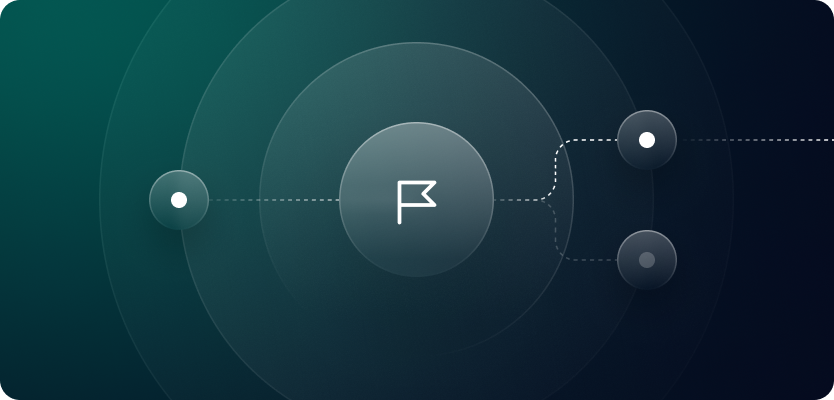Design systems are capable of solving issues.
Nezar Mansour is the Content Lead at Supernova — a platform that helps you build, manage, and scale your design systems with ease. Responsible for relaunching their website and blog and having previously worked at Sketch, his passion for design systems comes from years of experience. Nezar’s goal is to change the perception of design systems in the industry, making them more approachable and critical to the success of product teams.

To solve problems, teams create design systems. Identifying the most pressing issues your team is facing, is the best way to get started on the right foot. After all, a design system is only effective if your organization embraces and uses it.
Teams face many common challenges, and design systems help solve them. You can work your way back to the benefits of design teams, which would look like:
- Inconsistent designs and implementation
- Inefficient workflows
- Wanting a cohesive brand identity
The list can go on, but it’s your job to determine which pain points impact your team. To do this, you must treat your design system like an external product. Go to your users — in this case, your team — talk to them, set up research sessions, send out surveys, and find out what they struggle with.
Along with user pain points, you learn about the challenges faced while solving these issues. Are there organizational issues that need attention? Is it a cultural matter? Tooling? Resources? Etc.
By discovering these challenges early on, you can formulate the best strategies that will get your design system to demonstrate its value and gain traction within your organization quickly.
Formulating effective planning strategies

Once the initial challenges and pain points have been identified, it’s time to develop a strategic plan for your design system. This plan should address your uncovered issues and outline a clear path to success. Here are the main steps to help you create an effective planning strategy, inspired by different industry experts from Supernova’s panel discussions:
1. Define the scope: Determine the extent of your design system, including the number of products it will support, the platforms it will cover, and the resources required for its development and maintenance. This will help you set realistic expectations and allocate resources efficiently.
2. Establish goals and milestones: Set clear, measurable objectives for your design system that align with your organization’s overall goals. Break these objectives down into smaller milestones to track progress and maintain momentum.
3. Prioritize efforts: Based on the challenges you’ve identified, prioritize the areas where your design system can have the most significant impact. This will help you focus on high-value tasks and quickly ensure your design system delivers tangible benefits.
4. Adopt an iterative approach: Design systems are living, evolving entities. Embrace an agile mindset and be prepared to iterate on your design system as your organization’s needs change and new challenges arise.
5. Document and communicate: Keep your team informed about the design system’s progress, goals, and milestones. Clear documentation and communication will help ensure everyone is on the same page and working towards the same objectives.
Communicate impact and gain stakeholder support
A design system’s success heavily depends on the buy-in and support of key stakeholders, including designers, developers, product managers, and executives. To gain their support, you’ll need to effectively communicate the usefulness of a design system and demonstrate its potential impact on the organization — here are some examples:

Showcasing the benefits
Start by clearly articulating the advantages of a design system, such as increased efficiency, improved collaboration, and enhanced brand consistency. Use data and examples from your research to support your claims.
Sharing success stories
Present case studies from other organizations that have successfully implemented design systems, highlighting their positive outcomes, such as reduced design and development time, increased product quality, and improved user satisfaction.
Addressing concerns and involving stakeholders
Be prepared to address any concerns or objections that stakeholders may have. Listen to their feedback and provide well-reasoned, data-driven responses to their questions. Engaging key stakeholders throughout the design system’s development, from planning to implementation, will help them feel invested in the project and more likely to champion its success.
Tracking success and adapting to change
To ensure the long-term success and scalability of your design system, tracking its performance and adapting to changes in your organization’s needs is essential. Here are some ways to track design system success:
- Monitor key metrics: Identify and track key performance indicators (KPIs) that reflect the health and effectiveness of your design system. These may include adoption rates, component usage, and user satisfaction.
- Conduct regular reviews: Schedule periodic reviews of your design system to assess its performance, identify areas for improvement, and make necessary adjustments.
- Gather feedback: Continuously collect feedback from your team and stakeholders to ensure your design system remains relevant and effective. Use this feedback to inform future iterations and enhancements.

Setting up your design system for success requires a thoughtful approach to identifying initial challenges, formulating effective strategies, gaining stakeholder support, and tracking success. Following these steps and staying agile can create a robust, scalable design system that drives efficiency, collaboration, and brand consistency across your organization. Only after planning out your design system should you consider what tooling will help you achieve your desired outcome. You can build a custom solution or use a design system tool like Supernova, each with pros and cons.
***
If you enjoyed Nezar’s article, you will surely learn from Supernova’s Director of Design, Jan Toman, who will give a talk at the digital design conference Design Matters 23, which will take place in Copenhagen & online, on Sep 27-28, 2023. Jan and Nezar both work at Supernova, a leading tool for documenting, managing, and automating design systems. Get your ticket here!
Connect with Nezar on LinkedIn.










